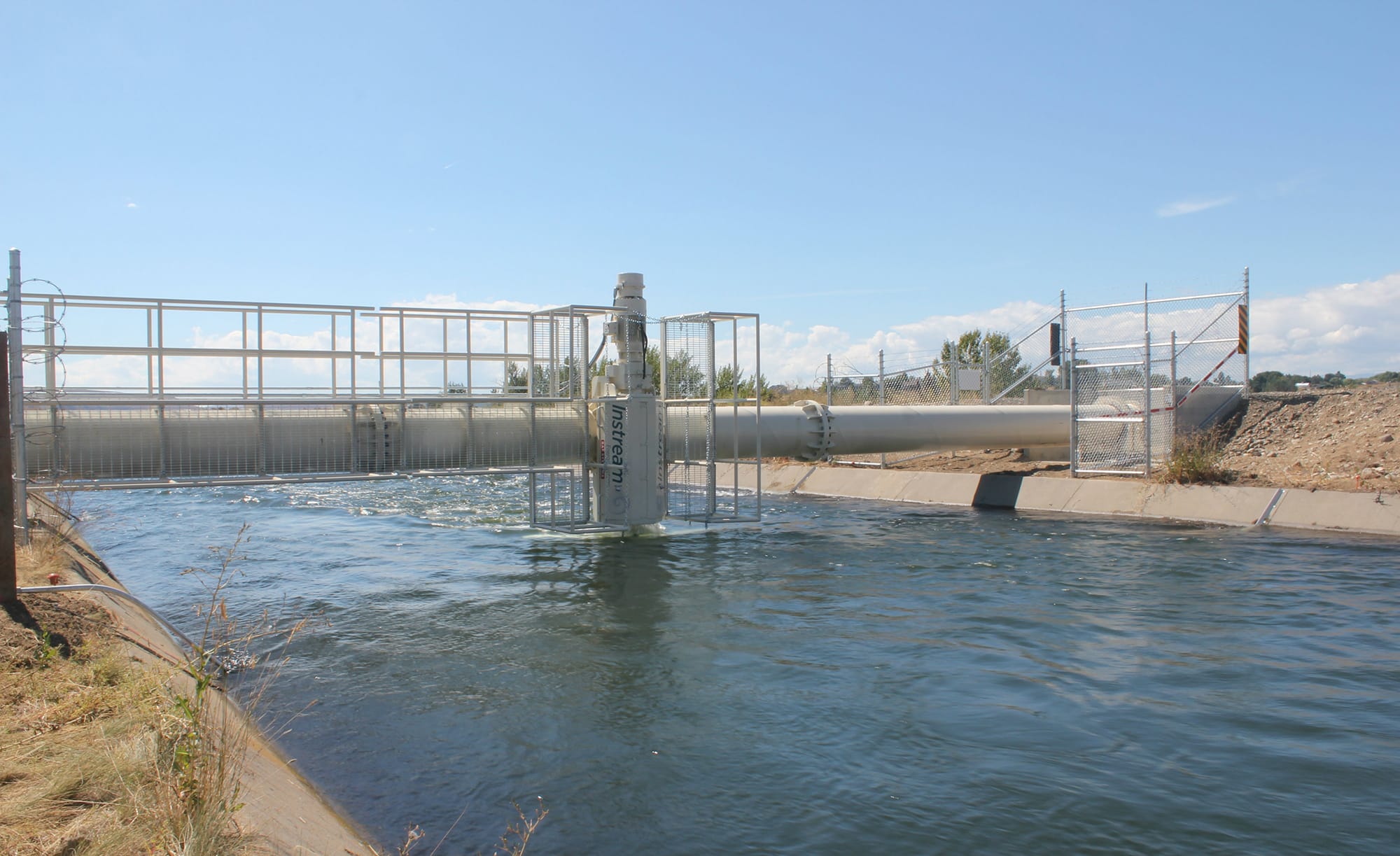SELAH — Farmers across the Yakima Basin depend on a network of canals to deliver water for their crops. Now scientists believe the canals could provide another resource to the region: renewable energy.
Capturing the energy contained in the water flowing in the Northwest’s rivers is nothing new — hydropower dams have been doing just that since the 1930s. But new turbine technology can create electricity without using dams or reservoirs, which carry environmental impacts.
A Canadian company is testing out a turbine in the Roza Canal, just south of the Yakima Canyon.
“We are creating power from moving water without the need for damming or diversions,” said Shannon Halliday, the director of business development for Instream Energy Systems. “The testing we’re doing in Roza will help us develop our next-generation technology.”
Vancouver, B.C.-based Instream Energy Systems worked with BAE Systems on the turbine design. They first installed their equipment in the canal in August for a monthlong test. Engineers will be back this week to put their turbine back in the canal and set up monitors to track it all summer.
The company chose to test its technology here because the Roza canal is a good example of the canal systems found around the West, where the technology could be deployed. The Bureau of Reclamation was happy to cooperate.
“We’re promoting the research. There’s a directive from D.C. to look into these technologies,” said Chuck Garner, the Yakima project manager for the reclamation bureau. “But, we don’t really have anything to do with it except they are putting it in our canal.”
The turbine looks like a giant single eggbeater, which spins slowly as the water pushes past it. All of the electronics that run it are kept well above the water.
To install it without interfering with water delivery operations, the company built a large steel structure stretching across the top of the canal, which includes a walkway for the engineers. The turbine is mounted on this structure and the blades are rotated into the water.
The turbine is designed to produce 25 kilowatts, but at normal canal conditions it’s expected to produce enough electricity to power eight to 10 homes when the canal is running. For now, however, that power is just used on site by the engineers to run computers and data-monitoring equipment.
Eventually, Instream Energy hopes to build commercial turbine farms through canal systems that could power hundreds or thousands of homes, Halliday said.
Existing canals are ideal for this technology because the environmental impacts are minimal. But the company is also considering using the turbines in rivers.
Instream Energy’s first test site in British Columbia was in a river used by bull trout and rainbow trout, Halliday said. Studies found that the fish easily navigate the turbine blades. The fish can sense the change in water movement similar to other in-stream obstacles.
The Bureau of Reclamation and the U.S. Department of Energy are supporting the study of this turbine technology. It’s part of a larger initiative to encourage development of innovative technologies to capture energy from moving water in tidal estuaries, rivers and canals, which is known as hydrokinetic energy.
“This canal is a great test facility,” said Jesse Roberts, a scientist with the water power program at Sandia National Laboratory in New Mexico. “It’s challenging to make measurements in rivers or tidal channels, where you need to work from boats. The canal allows us to test the technology carefully.”
Roberts is the lead on a Department of Energy study to look at how this turbine affects the water in the canal.
The turbine both changes the water level slightly and changes the speed of the water temporarily, Roberts said. The water that goes through the blades slows down, but the water that goes around the blades speeds up slightly, so downstream from the turbine, the water eventually returns to its previous speed.
His team plans to use a computer model to predict effects of multiple turbines.
Similar data can also be used by Instream Energy to improve the efficiency of its turbines and figure out how far apart turbines should be spaced to maximize energy production, Halliday said.
Halliday said that once the company builds a turbine farm, it should produce electricity at prices comparable to other renewable sources, such as wind and solar. The canals would produce a consistent, supply of power.
The technology could also be used to meet local power needs along a canal, such as an irrigation district’s, Halliday said. Or the system could be used to replace a diesel generator for remote communities or military outposts if there’s flowing water nearby.
Data gathered this summer in the Roza canal is the next step toward potential power production options.
The company is investigating locations in North America and Europe to find its first commercial site, Halliday said, and the Yakima Basin, with 416 miles of federally managed canals, could be an attractive option.



